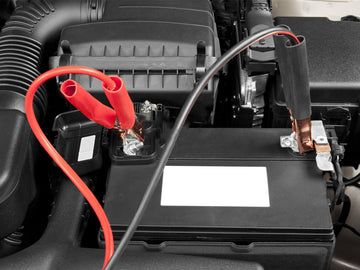
Portable jump starters are a lifesaver when your car battery dies, but using them while driving is not recommended due to several important reasons and considerations.
Understanding Portable Jump Starters
Portable jump starters are compact devices equipped with a battery and jumper cables designed to deliver a surge of power to start a vehicle with a dead battery. They are not intended to replace a fully functioning car battery but rather to provide a temporary solution to get your car running.
Limitations of Driving with a Portable Jump Starter
Limited Power Output: Portable jump starters are not equipped to sustain the continuous electrical demands of a vehicle during operation. It's a solution for how to boost a car in an emergency. They provide a brief surge of power to start the engine but cannot maintain the ongoing power needs of the vehicle's systems.
Safety Concerns:
- Overheating: Extended use of a jump starter can cause overheating, which may damage the internal components of the device or pose a fire hazard.
- Electrical Damage: If not properly secured, the connections between the jump starter and the car's battery can become loose while driving, potentially causing electrical shorts or damage to the vehicle's electrical system.
- Risk of Disconnection: If the car jump starter disconnects while the vehicle is in motion, it could abruptly cut power to the engine, leading to a sudden stall and posing a safety risk, especially in traffic or hazardous conditions.
- Compatibility Issues: Modern vehicles rely heavily on sophisticated electronics and computer systems. The power provided by a jump starter may not be stable or regulated enough to support these systems, risking malfunctions or damage.
Alternatives and Best Practices
Immediate Battery Replacement: After using a jump starter to start your vehicle, it's essential to replace the dead battery as soon as possible. Driving with a weakened or failing battery can lead to further problems and unexpected breakdowns.
Jumper Cables: Keeping traditional jumper cables in your vehicle allows you to safely jump-start your car using another vehicle's battery. This method is reliable and avoids the limitations of portable jump starter for driving.
Battery Maintainer: A battery maintainer or trickle charger can be used to keep your car battery charged when the vehicle is not in use for extended periods. This prevents the battery from dying and reduces the need for jump starts.
Roadside Assistance: Many roadside assistance programs offer jump-starting services as part of their membership benefits. This is a convenient and safe option if you're unsure about jump-starting your vehicle yourself or if you encounter difficulties.
Don’t Drive Your Car with a Portable Jump Starter Attached
While portable battery boosters are essential emergency tools for starting a car with a dead battery, they are not suitable for driving with the intention of charging or maintaining your vehicle's battery. Their design and capacity are geared towards temporary use and starting purposes only. To ensure safety, prevent damage to your vehicle's electrical systems, and maintain reliable operation, prioritize replacing a dead battery promptly when needed. Understanding these limitations will help you make informed decisions and maintain the longevity and performance of your vehicle's electrical components.



